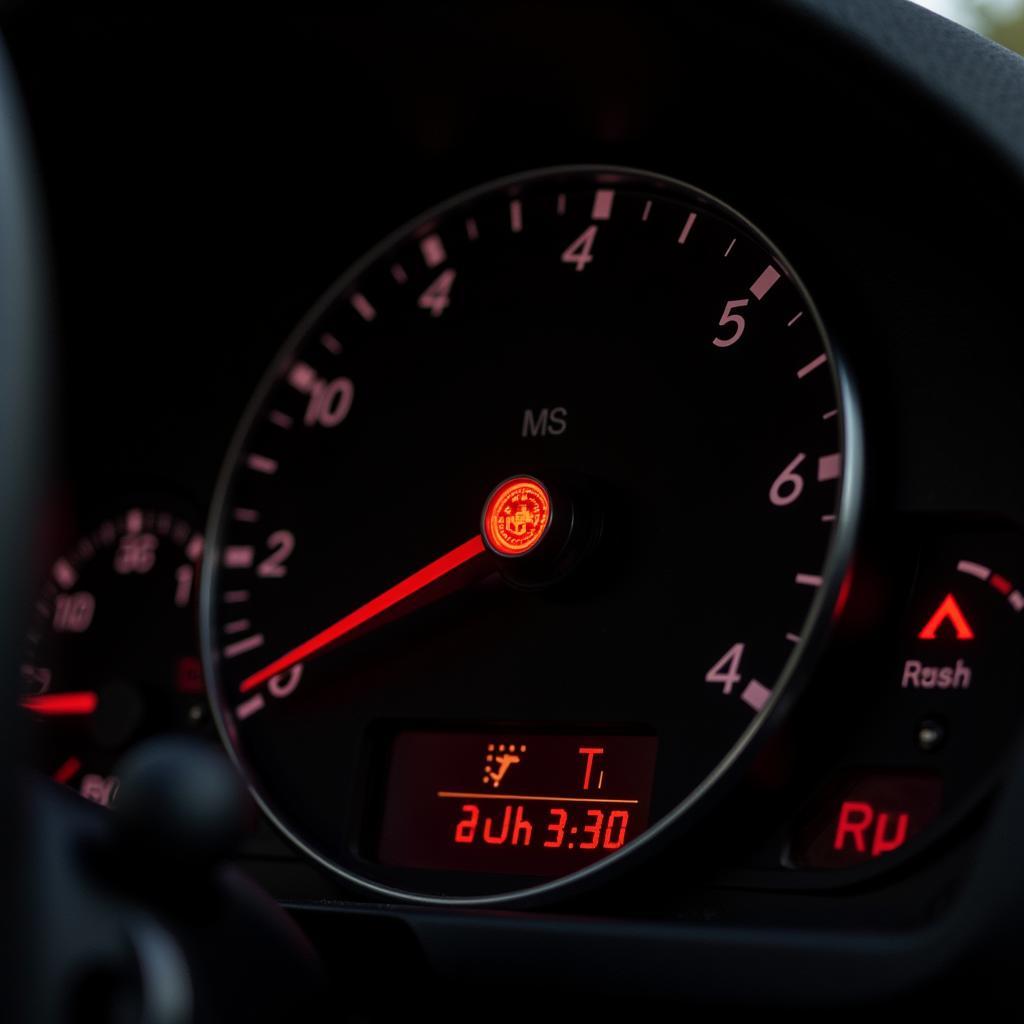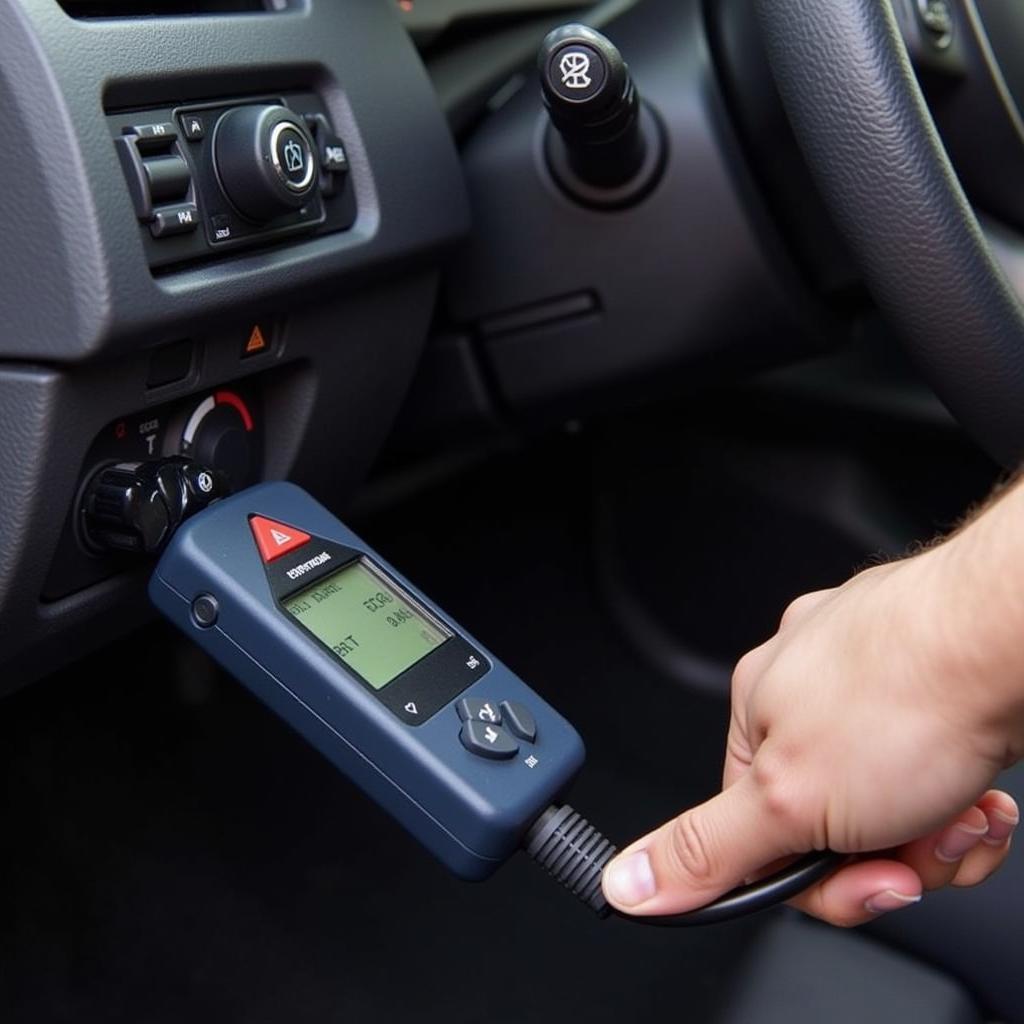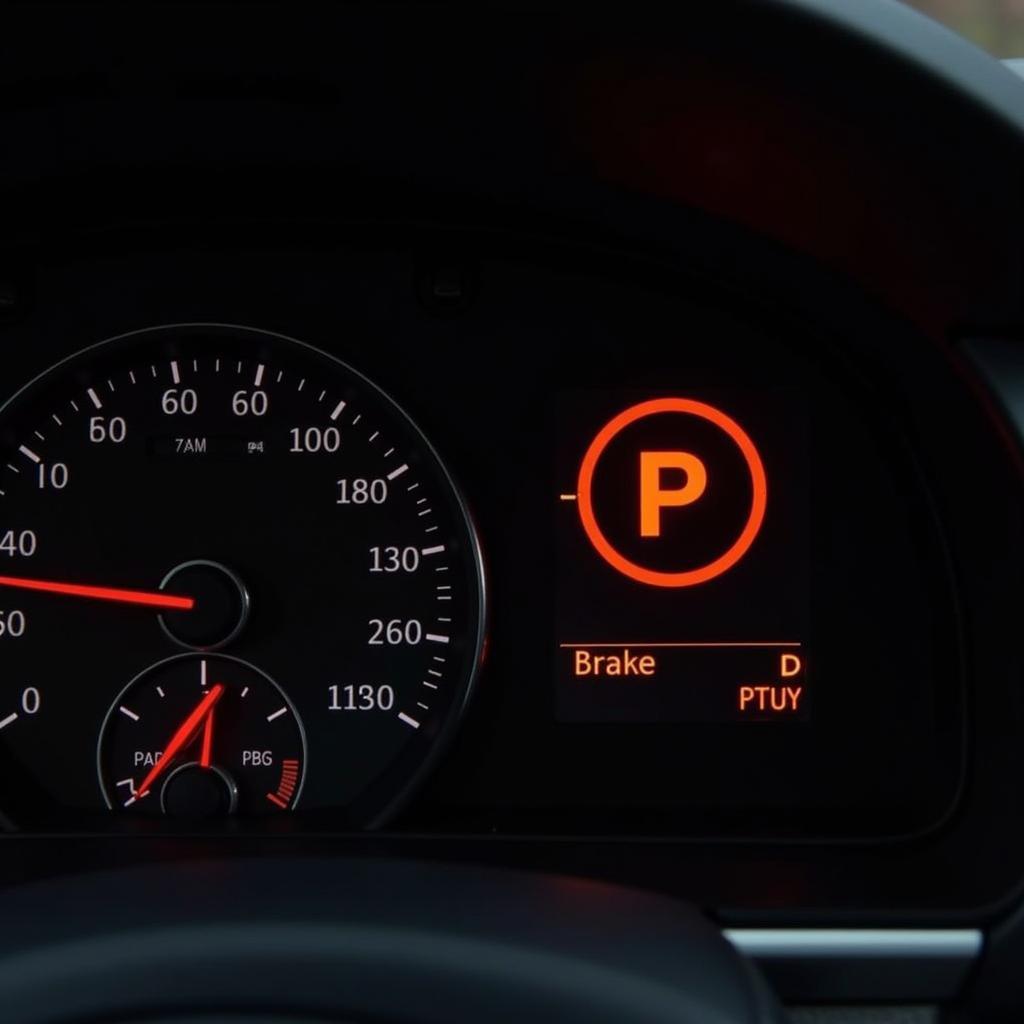Seeing the brake warning light illuminated on your BMW 328i’s dashboard can be a nerve-wracking experience. While it’s crucial to never ignore warning lights, sometimes the fix is simpler than you might think. This guide will walk you through the common causes of a lit brake warning light on a BMW 328i and provide clear steps on how to reset it.
Understanding the Brake Warning Light
Before you attempt to reset the warning light, it’s important to understand what triggered it in the first place. Here’s a breakdown of the common culprits:
- Worn Brake Pads: The most frequent reason for the brake warning light is worn-out brake pads. Your BMW is equipped with sensors that trigger the light when the pads reach a certain level of wear.
- Low Brake Fluid: Brake fluid is the lifeblood of your braking system. A leak in the system or significantly low fluid levels can illuminate the warning light.
- Faulty Brake Light Switch: Your brake lights and the warning light are often connected. A malfunctioning brake light switch could be the issue.
- ABS System Malfunction: Your BMW’s Anti-lock Braking System (ABS) plays a critical role in safe braking. A fault in this system will trigger the warning light and require professional diagnosis.
 BMW 328i Dashboard with Brake Warning Light
BMW 328i Dashboard with Brake Warning Light
Resetting the Brake Warning Light on Your BMW 328i
Important Note: Before attempting any reset, it’s essential to ensure the underlying issue triggering the warning light has been addressed. If you’re unsure, consult a qualified mechanic or BMW specialist.
If you’ve identified and resolved the issue (like replacing worn brake pads) and the light remains on, here’s how to reset it:
- Start with Safety: Park your BMW 328i on a level surface and engage the parking brake.
- Locate the OBD-II Port: The OBD-II port is usually located under the dashboard on the driver’s side.
- Connect an OBD-II Scanner: A basic OBD-II scanner can be purchased online or at most auto parts stores. Connect the scanner to the port.
- Turn on the Ignition: Turn the key to the “on” position without starting the engine.
- Access the Brake System: Navigate through the scanner’s menu to access the brake system module.
- Select “Reset” or “Clear Codes”: The exact wording will vary depending on your scanner, but look for an option to reset or clear the brake warning light codes.
- Follow On-Screen Instructions: Your scanner will provide further instructions on completing the reset process.
- Disconnect and Test Drive: After the reset, disconnect the scanner and take your BMW 328i for a test drive, paying close attention to the brakes.
 Connecting an OBD-II Scanner to a BMW 328i
Connecting an OBD-II Scanner to a BMW 328i
When to Seek Professional Help
While a simple reset might do the trick, certain situations call for the expertise of a BMW mechanic:
- Recurring Warning Light: If the brake warning light reappears shortly after a reset, it indicates a persistent issue.
- Unusual Brake Feel: If you experience spongy brakes, grinding noises, or vibrations when braking, seek immediate professional help.
- ABS Light On: An illuminated ABS warning light in conjunction with the brake warning light often signifies a problem with the ABS system.
Tips for Maintaining Your BMW’s Brakes
- Regular Brake Inspections: Have your brakes inspected annually or as recommended in your BMW’s owner’s manual.
- Quality Brake Pads: Invest in high-quality brake pads designed for your BMW 328i’s specifications.
- Brake Fluid Flushes: BMW recommends flushing your brake fluid every 2 years to ensure optimal braking performance.
 Mechanic Inspecting BMW Brakes
Mechanic Inspecting BMW Brakes
By understanding the common causes, knowing how to perform a reset, and recognizing when professional help is needed, you can ensure the safety and longevity of your BMW 328i’s braking system.
Expert Insight: “Ignoring a brake warning light is like playing with fire. Even if you think it’s a minor glitch, it’s crucial to have it checked out to avoid potentially dangerous situations,” advises Mark Stevenson, a seasoned BMW master technician with over 20 years of experience.
Remember, your brakes are your car’s most vital safety system. Never compromise on their maintenance or ignore warning signs.

